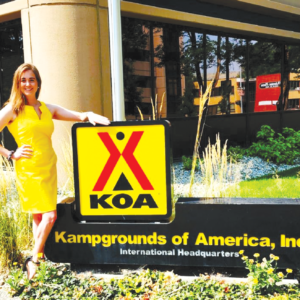Montana Academy of Salons, 300 S 24th St W #B01, 59102, 771-8772, Linda McPherson, schools
Landie Drywall & Painting, 23255 Wahupa, Frenchtown 59834, 544-0143, David Lande, service
Billings Lady Outlaws, 3054 Hunters ridge Loop, 59102, 690-9648, Lacey Sullivan, service
The Truesdell Corporation, 1310 W 23rd St, Tempe, AZ 85282, Erica Bryant, general contractors
Stacie Jones’ Cleaning Services, 2211 3rd Ave N, 59101, 307-388-8740, Stacie Jones, service
The Shady Lady’s – Cosmetic Tattooing, 111 Main St – Ste 5, 59105, 561-1681, Jordynn Cossitt, service
Born Again Beauty & Ink by Megan Price LLC, 745 Henesta Dr, 59102, 998-8886, Megan Price, service
Rhino Electric, 3126 Morning Glory Circle, 59102, 540-3775, Ryan Teini, electrical contractors
Rotech (Overland) 2110 Overland Ave, 59102, 245-9792, Suzy Martinez, retail sales
Lifebridge Counseling LLC, 1330 Colton Blvd, 59102, 698-3389, Cathy Bevier, service
Aguilar Cleaning Enterprise Services, 8951 Jerry Lee ln, 59106, 714-920-7189, Jesse Aguilar, service
Affiliated Mortgage Zachery Blair, 822 Avenue C, 59102, 602-525-1120, Zachery Blair, service
Palouse residential Properties LLC, 611 N 31st St, 59102, 281-900-7102, Russell Perkins, real estate properties
Taichi Tuina Healing, 511 N 30th St, 59101, 916-1332, Jing Chong, service
Mystic River Dirtworks LLC, 6444 Neibauer Rd, 59106, 690-6698, James Kamminga, service
Purely Obsessed Permanent Jewelry LLC, 1503 13th St W, 59102, 962-5518, Michelle Carnahan, retail sales
Brandish Construction LLC, 304 Grand, 59101, 855-0476, Howard Lewis, general contractors
Steel City Drones LLC, 282 Foxcroft Rd, Pittsburgh PA 15220, 412-980-1941, David King, retail sales
Wizard Office Services 221 Prospectors Ln, 59105, Dillon Heath, service
Monaco’s Photography, 928 Broadwater Ave – Ste 201, 59101, 200-2724, Sarah Monaco, service
Freeform, 3319 Rimrock Rd, 59102, 850-4331, Joshua Tolentino, misc
Northwest Fugitive Recovery, 43 W Meadow Dr, 59102, 200-4697, Timothy Westervelt, service
Camping World RV Sales of Billings, 976 Rosebud Ln, 59102, 847-229-6465, n/a, service
Nomadic properties LLC, 5116 Yellowstone Falls Ln, 59106, 360-8894, Jace Palmer, real estate rentals,
Hayes Design & Build, 3385 Granger S #64, 59102, 946-2466, Joshua Hayes, general contractor
Bearded Bulldog Pub Grub, 2503 Montana Ave, 59101, Jen Marble, restaurants
Steamworld, 3619 2nd Ave S, 59101, 561-5566, Britani Bishop, service
Homegoods Inc – #1105, 2618 King Ave W- Ste 1, 59102, 774-308-0056, Kristin Adams, retail sales
JT Homes, 6010 Farmstead Ave #30, 59102, 951-316-3808, Jessica Tapp, real estate rentals
Good Day Assisted Living, 1847 Forest Park Dr, 59102, 561-4244, Dan & Steph Flesch
Rogers Concrete, 55 Clark Dr, Columbus 59019, 321-1855, Raylee Rogers, service
MEL Construction, 5030 Chevelle Rd, 59106, 701-230-9453, Mark Littleghost, general contractor
Beartooth Cross Stitch, 3227 Parkhill Dr, 59102, 413-8716, Alisa Clarke, service
Gluck Building Company, 26901 Agoura Dr – Ste 100, Calabasas CA 91301, 818-880-8220, Thomas Gluck, general contractors
MRM Unified Campus LLLP, 2822 Minnesota Ave, 59101, 259-3800, service
Glacier Vapor, 2346 Grand Ave, 59102, 545-9413, Marshall Corriz, retail sales
Albertsons #3367, 5317 Grand Ave, 59106, 371-2755, Albertson’s LLC, retail sales
Shilhanek Designs, 3112 Rosemont Way, 59101, 561-5457, Tarin Shilhanek, service
Caliber Collision Centers, 4130 Kari Ln, 59106, 998-2190, Lori Eaton, auto business
Elevation Transport Services, 2147 Phoebe Dr, 59105, 839-1733, Craig Smith, service
Black Hills Federal Credit Union, 1595 Grand Ave – Ste 235B, 59102, 831-1204, Tyson Taylor, banks/loan agencies
Dust Officers, 4059 Orrel Rd-#2, 59101, 661-0144, Scott Crenshaw, service
Apollo Detail, 332 Bonnie Ln, #2, 59101, 515-441-9367, Nathan Lucero, services




